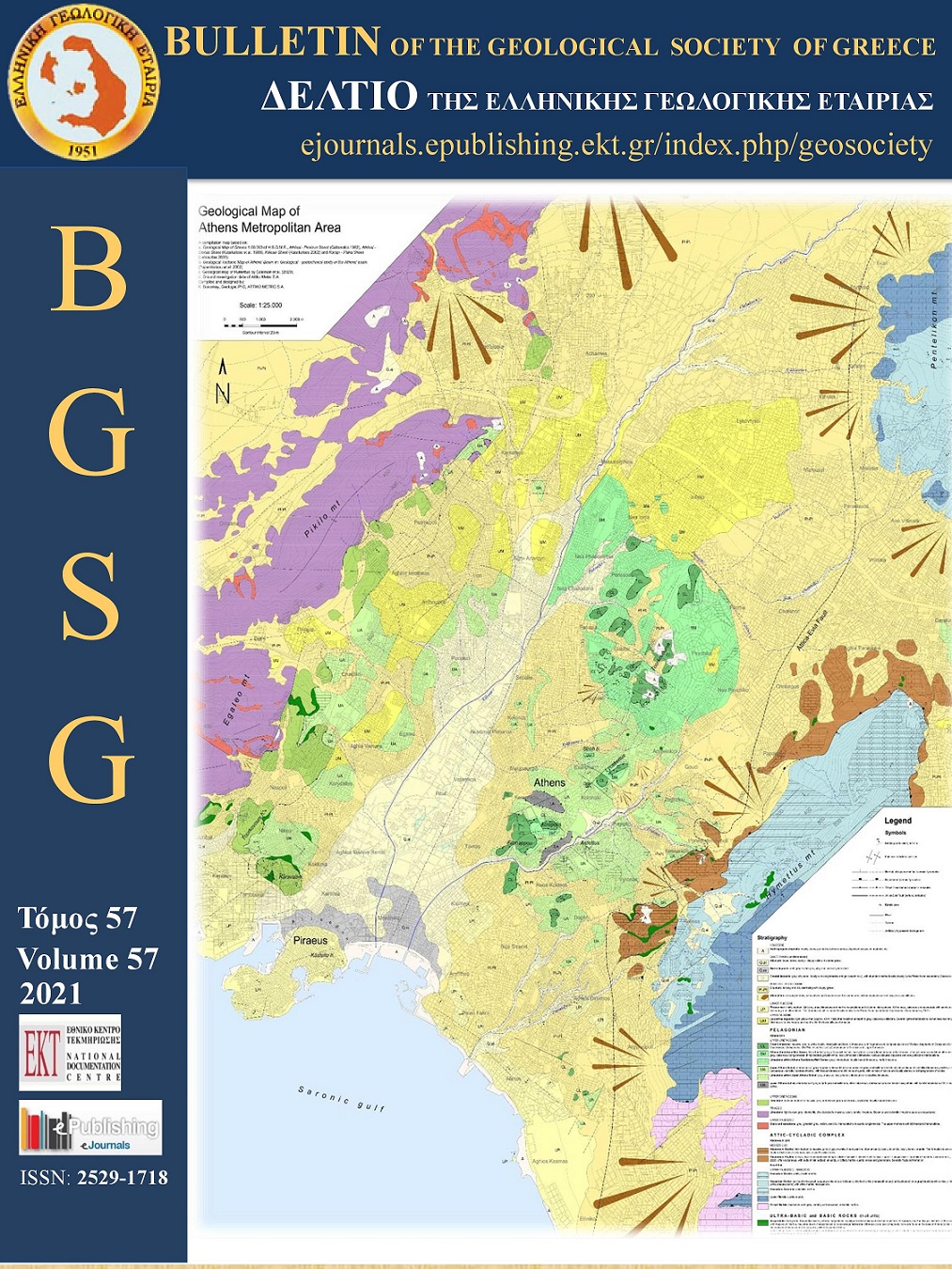Paleohydrology of the Stefanina Cave (Greece)
Résumé
The development of hypergene Stefanina Cave, the hydrological conditions, and the maximum discharge of the paleo-flow are studied, based on its pattern in ground-plan, the geometry of the passage, and the peak flow velocity from the dimensions of the scallops. The village of Stefanina is located East of Thessaloniki and the cave NE of the village. A study was conducted measuring the orientation of the discontinuities of the rocks inside and outside the cave, the scallops in various sites to estimate the flow velocities, and in addition, were taken photographs for the full analysis of its cross-section. The cave-in ground-plan has a pattern of branches, which is often associated with recharging through karstic depressions. The shape of the passages is both curvilinear and angular, depending on the foliage and the fractures. The symmetrical phreatic passage shape has been evolved to a vadose canyon, forming a keyhole passage in cross-section. This is indicative of a water table drop. The scallops are visible in a meandering channel, where the discharge of the paleo-flow is estimated. The estimated peak flow velocity ranges from 0.4 to 2.7 m / s, while the area-specific peak flow discharge is estimated to be 2.2 m3/s. On the one hand, the scallops represent the peak flow velocity, on the other hand, the karst springs have a limited maximum discharge, regardless of the size of the catchment, making it impossible to use the calculated paleo-discharge to estimate the respective catchment area.
Article Details
- Comment citer
-
Lazaridis, G. T., Fellachidou, K., & Georgaki, M.-N. (2021). Paleohydrology of the Stefanina Cave (Greece). Bulletin of the Geological Society of Greece, 57(1), 52–67. https://doi.org/10.12681/bgsg.26168
- Numéro
- Vol. 57 No 1 (2021)
- Rubrique
- Geomorphology

Ce travail est disponible sous licence Creative Commons Attribution - Pas d’Utilisation Commerciale 4.0 International.
Authors who publish with this journal agree to the following terms:
Authors retain copyright and grant the journal right of first publication with the work simultaneously licensed under a Creative Commons Attribution Non-Commercial License that allows others to share the work with an acknowledgement of the work's authorship and initial publication in this journal.
Authors are able to enter into separate, additional contractual arrangements for the non-exclusive distribution of the journal's published version of the work (e.g. post it to an institutional repository or publish it in a book), with an acknowledgement of its initial publication in this journal. Authors are permitted and encouraged to post their work online (preferably in institutional repositories or on their website) prior to and during the submission process, as it can lead to productive exchanges, as well as earlier and greater citation of published work.



